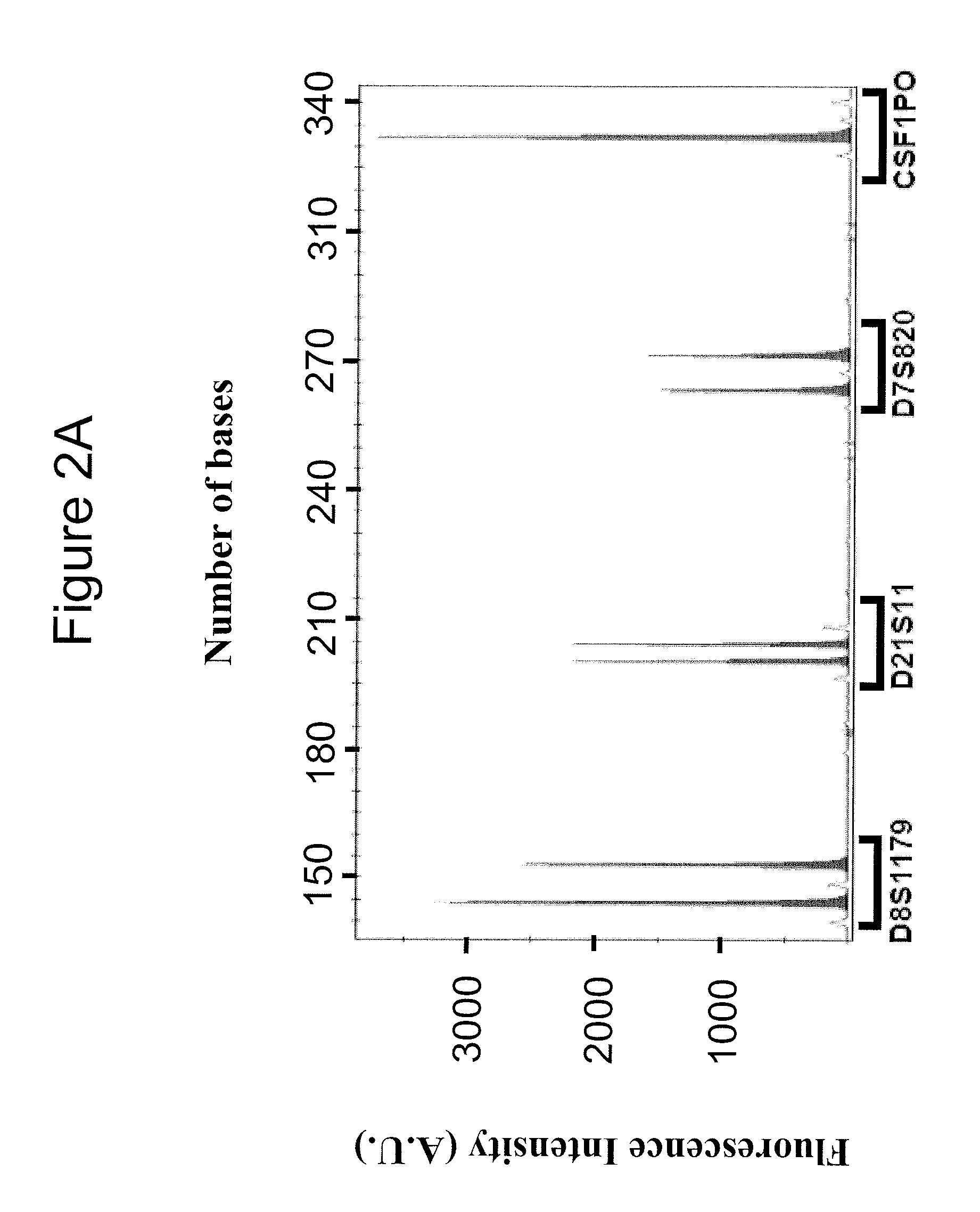Method For Recovering Nucleic Acid From A Mixed Cell Suspension, Without Centrifugation
a nucleic acid and mixed cell technology, applied in the field of isolated cells, can solve the problems of loss of sperm dna, contamination of sperm cell dna, time-consuming and laborious standard protocol, etc., and achieve the effect of high throughput and easy adaptability to automation
- Summary
- Abstract
- Description
- Claims
- Application Information
AI Technical Summary
Benefits of technology
Problems solved by technology
Method used
Image
Examples
specific embodiments
[0048]The process of the invention can begin with resuspension of a biological specimen such as a forensic specimen in a vessel or a sample already in suspension can be provided in a vessel.
[0049]The sample contains impurities, cells and cell suspension medium. Once the sample is contained in a vessel, impurities are removed. This can be accomplished by first sequestering the cells with particles that are responsive to a magnetic field. While the vessel is in the presence of a magnetic field, the particles push the cells towards the source of the magnetic field and the cell suspension medium along with the impurities is removed, whereas the particles remain in the vessel. The removal of the cell suspension medium can be accomplished in an automated fashion or manually, by pipetting or aspirating, both gentle techniques that do not damage the cells.
[0050]In a particular forensic embodiment, a forensic specimen is reconstituted in the same vessel used for DNA isolation In another fore...
example 1
Sperm Cell and Epithelial Cell DNAs Isolation and Analysis
[0110]A mock forensic sample was prepared as follows: Three month old female buccal swab was reconstituted into 1 mL 1×PBS buffer to provide epithelial cells. 5 μL (1,000 cells per microliter) of a sperm cell suspension were then added to 155 μL of the epithelial cell suspension. The resulting mock forensic sample contained sperm cells, epithelial cells and extraneous epithelial DNA. At this point the number of epithelial cells in the mock sample was unknown.
[0111]40 μL of trapping magnetic particles (Dynabeads MyOne Carboxylic Acid, Dynal Biotech) were added to the vessel, containing the heterogeneous cell sample. The contents of the vessel were then mixed by pipetting up and down.
[0112]Cells were then sequestered by putting the sample on 6 Tube Magentic stand (herein “MagRack”, Applied Biosystems, Foster City, Calif.). Once the cells were sequestered, the supernatant, containing extraneous DNA, was removed from the vessel b...
example 2
Selectively Lysing Sperm Cells Which are Present in a Heterogeneous Cell Suspension
[0120]Two samples were made, each containing about 100,000 sperm cells and 100,000 epithelial cells in 60 μL 1×PBS. 140 μL of 1×PBS and 1 μL of propidium iodide (1 mg / mL) were added to the first sample.
[0121]100 μL of 2M KCl, 40 μL of 1M DTT and 1 μL of propidium iodide (1 mg / mL) were added to the second sample. The final concentrations in the 200 μL second sample were 1M KCl an d200 mM DTT. The samples were then mixed and incubated at room temperature for 5 min. Both samples were examined under fluorescent microscopes.
[0122]FIG. 4A is the image of the cells from sample 1. FIG. 4B is the image of the cells from sample 2. Both panels of the figure show that the epithelial cells remained intact in both the first and second sample. The sperm cells, in contrast, were lysed in the second sample, but not in the first sample. The, the presence of KCl and DTT in the second sample, resulted in selective lysis ...
PUM
| Property | Measurement | Unit |
|---|---|---|
| pH | aaaaa | aaaaa |
| diameter | aaaaa | aaaaa |
| diameter | aaaaa | aaaaa |
Abstract
Description
Claims
Application Information
 Login to View More
Login to View More - R&D
- Intellectual Property
- Life Sciences
- Materials
- Tech Scout
- Unparalleled Data Quality
- Higher Quality Content
- 60% Fewer Hallucinations
Browse by: Latest US Patents, China's latest patents, Technical Efficacy Thesaurus, Application Domain, Technology Topic, Popular Technical Reports.
© 2025 PatSnap. All rights reserved.Legal|Privacy policy|Modern Slavery Act Transparency Statement|Sitemap|About US| Contact US: help@patsnap.com



